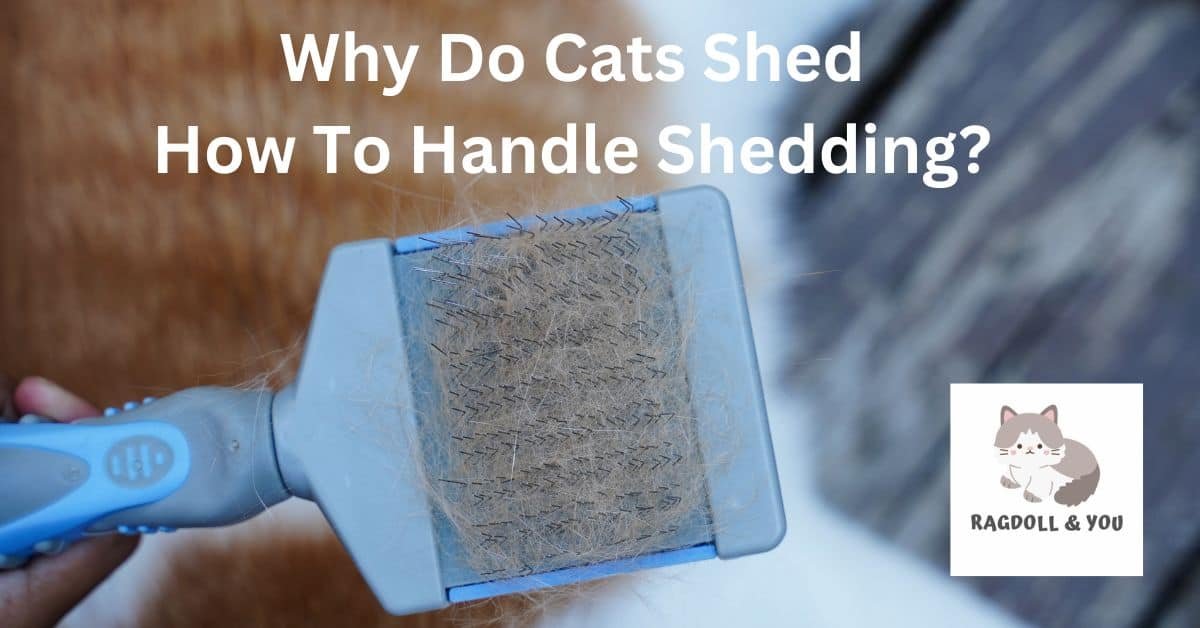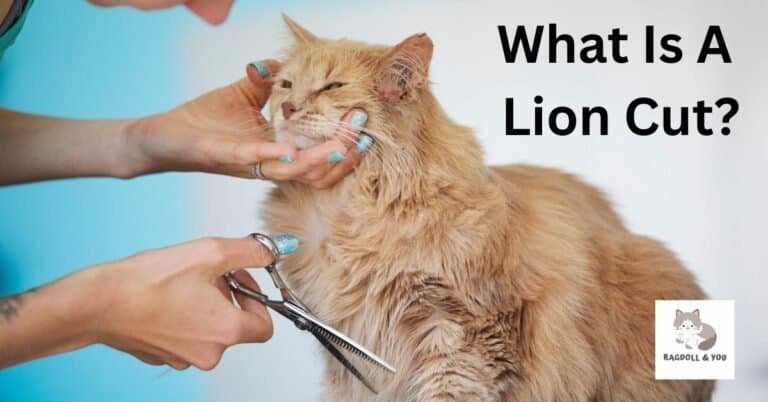Do Cats Shed? Understanding Normal Cat Hair Loss
Shedding is a normal part of a cat’s natural hair growth cycle. However, excessive shedding can be frustrating for cat owners and may point to an underlying medical issue.
While cat hair inevitably ends up around the house, pay close attention if your cat seems to be shedding more than usual. Excessive shedding can indicate problems like thyroid or kidney disorders.
There are some steps cat owners can take to manage heavy shedding. Regular grooming and brushing can help remove loose hair and prevent hairballs. Make sure your cat is eating a nutritious diet and managing stress.
Talk to your veterinarian if the excessive shedding persists, as they can check for any health problems. Shedding is part of life with a cat, but excessive shedding needs attention.
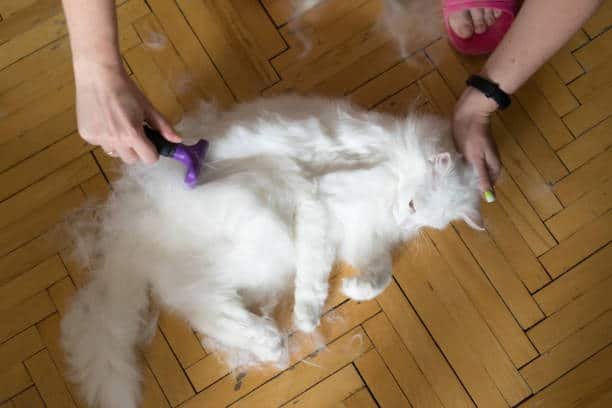
Key Takeaways
- Shedding is a normal part of being a cat. It helps them eliminate old pet hair so new, beautiful hair can grow.
- Additional shedding could indicate underlying health concerns like skin infections, allergies, parasites, or metabolic diseases.
- Regular brushing, balanced nutrition, and vet check-ups are important for managing your cat’s shedding. It keeps their fur coat healthy.
Decoding Cat Hair and Shedding
Cat hair and constant shedding can be confusing for cat owners. Understand the difference between fur and hair and why cats shed to manage their grooming behavior effectively.
The Difference Between Cat Fur And Hair
Cats have both fur and hair, but they are not the same. Fur is a lot of hair packed together. It’s close to a cat’s body. Hair is every single strand that makes up this fur.
Cats also have whiskers, which are a special kind of hair. Whiskers help cats feel things around them. Cats may have long or short hair layers based on hair length and density differences.
Each layer plays a role, like keeping warm, staying dry in the rain, or safe from harm.
Why Do Cats Shed?
Cats shed to stay clean. Old hair follicles fall out, so new pet hair can grow in its place. It’s the cat’s way of keeping their fur nice and healthy. Indoor cats may shed all year as they live in warm homes.
Outdoor cats usually shed a lot during spring and fall. Long-haired cats like Maine Coons or Persians often lose more hair than short-haired ones like Scottish Folds or American Shorthairs.

Normal Cat Shedding vs. Medical Problems
All cats shed, which is a normal part of being a cat. Shedding results in clumps of hair falling so a new coat of hair can grow. But sometimes, frequent shedding can signal something wrong with your cat’s health.
Some medical problems cause cats to shed more than they should. These problems may include skin infections from bacteria or fungi and parasites like fleas and mites.
Changes in their bodies, like pregnancy or diseases like hyperthyroidism and kidney disease, can also impact shedding. If you see bald spots on your cat’s delicate skin, it might have an issue beyond normal shedding.
Dangerous issues could also make the hair coat greasy or unkempt or cause redness on the delicate skin. You must take care of these signs immediately by getting a vet’s help.
Even if your long-haired cat sheds more than a short-haired one, huge amounts of cat hair lost are still abnormal.
Cats living inside can have their shedding cycles changed by artificial lighting, resulting in heavy shedding during the spring and fall seasons.
Common Causes of Excessive Cat Shedding
Common causes of excessive cat shedding include dietary issues, stress, allergies, pregnancy, parasites, and metabolic diseases.
Dietary Issues
Cat foods play a big part in how much they shed. Poor diet can lead to extra hair loss issues. Cats need animal protein and fats for healthy skin and fur.
If your pet is not getting high-quality cat food, it may shed more than usual. Some cats might also have an allergic reaction to their food. This could cause them to lose a lot of fur, too.
Your vet team can determine if the shedding is due to a bad diet or allergies to food. Feeding your cat well for its overall health and less shedding is important.
Stress
Stress can cause a lot of problems for cats, including excessive shedding. When cats feel stressed or anxious, they may perform excessive grooming and pull out their fur.
This can lead to bald patches and thinning coats. Is your cat shedding more than usual, and do you suspect short-term stress might be the cause?
Take them to the vet for a hair examination. The vet team will determine if chronic stress is the underlying issue and recommend appropriate treatments or interventions.
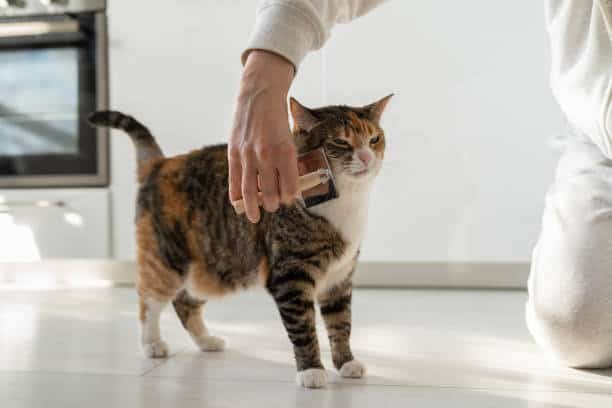
Allergies
Allergies can cause excess shedding in cats. Cats can develop allergies to food, the environment, and biting insects. These cat allergies can lead to skin conditions and additional hair loss.
Take it to a veterinarian for examination and tests to determine if food or environmental allergies are causing the shedding.
Pregnancy
Pregnancy can make cats shed more than usual. This is because hormonal changes during pregnancy affect the pet hair growth cycle.
It’s common for pregnant cats to have increased shedding, especially in the weeks leading up to giving birth. You shouldn’t worry too much if your cat breed is pregnant and shedding a lot.
If you notice any other concerning symptoms or the shedding seems excessive, even for a pregnant cat, consult your veterinarian for guidance.
Parasites
Parasites, like mites and fleas, can cause excess shedding in cats. These tiny creatures can irritate your cat’s skin, leading to intense itching and scratching.
The constant scratching may result in clouds of hair loss and the formation of red bumps or scabs on their skin. Allergies to fleas can also cause similar symptoms.
Address these parasite infestations promptly through regular flea prevention measures and prompt treatment if an infestation occurs.
If you notice excessive shedding, irritation, or sores on your cat’s skin, consult a veterinarian for proper diagnosis and treatment.
Metabolic Diseases
Metabolic diseases like kidney, liver, thyroid, or adrenal gland diseases can cause excessive shedding in cats. These diseases can affect a cat’s healthy hair coat and contribute to heavy hair loss.
Certain types of cancer can also lead to excessive shedding in cats. If your cat is shedding more than usual, it could indicate underlying metabolic problems.
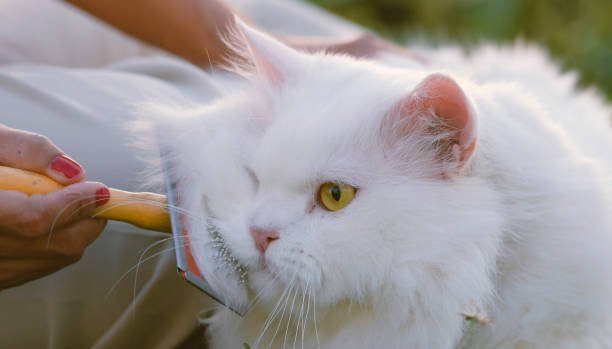
How to Manage Your Cat’s Shedding
Manage your cat’s shedding with regular brushing, a well-balanced diet, and vet check-ups. Learn more about these tips and other ways to control your cat’s shedding.
Regular Brushing
Regular brushing is important for managing your cat’s shedding. By brushing your cat’s fur regularly, you remove dead hair. It releases natural oils into their skin, promoting a healthier coat.
Brushing also helps reduce excessive shedding and prevents matted hair and the frequency of hairballs. It benefits indoor cats, who may shed more due to artificial lighting and central heating.
Set aside some time for regular brushing sessions with your furry friend to keep their coat looking its best.

Balanced Nutrition
Balanced nutrition is critical for managing a cat’s shedding. Providing your cat with the best-quality diet results in a healtheir skin and coat.
Poor food quality can contribute to shedding in cats. Choose a healthy diet that contains animal-based protein, carbohydrates, fats, minerals, and vitamins.
Overfeeding can also lead to obesity and skin problems. So, feed your cat high-quality wet food based on age and activity level.
Regular Vet Check-ups
Regular vet check-ups help manage your cat’s shedding and overall health. The veterinarian will examine your cat’s coat and skin for abnormal shedding or underlying health issues.
If necessary, they may also perform tests to identify the cause of excessive shedding.
With an annual health check and proper veterinary attention, you can catch any potential problems early on. You can work towards finding a solution to minimize your cat’s shedding and keep it healthy.

When to Be Concerned About Your Cat’s Shedding
If you notice that your cat is shedding more than usual, pay attention. Excessive shedding can sometimes be a sign of underlying health issues in cats.
So, when should you be concerned about your cat’s shedding? If your cat has bald spots or sores on their skin, it could indicate a fungal infection or skin problem.
Increased meowing, changes in appetite, and litter box avoidance are red flags. If your cat has a greasy or dull coat or experiences excess grooming to irritation, these could be a problem.
Consult a veterinarian if you have concerns about your cat’s shedding habits for the best experience.
FAQs About Cat Shedding
Do Indoor Cats Shed Hair?
Indoor cats do shed hair, just like outdoor cats. Shedding is normal for all cats, regardless of whether they live inside or outside.
Indoor cats may shed less than outdoor cats due to environmental factors. They still go through a shedding hair lifecycle throughout the year.
Regular brushing helps minimize the amount of fur your indoor cat sheds around the house. While indoor cats shed hair, you can keep it under control with proper grooming sessions and care.
How Do I Stop My Indoor Cat From Shedding?
To reduce shedding in your indoor cat, there are several things you can do. First, regular brushing removes loose fur and prevents it from ending up all over your home.
Use a specialized brush suitable for your cat’s coat type, and be gentle. Provide a healthy cat diet with high-quality food that supports skin and coat health.
Regular vet check-ups identify any underlying issues causing excessive shedding. Remember that shedding is a natural process for cats. You can’t stop it completely, but these steps can help you manage it better.
How Much Do Cats Shed?
Cats shed a moderate amount of hair. The quantity can vary depending on the breed and individual cat. Long-haired cats tend to shed more than short-haired cats.
Seasonal shedding occurs more in the spring and fall. Indoor living and artificial lighting can affect their shedding patterns.
Excessive or sudden increases in shedding might indicate an underlying health issue that needs veterinary attention.
How Do I Get Rid Of Cat Hair Everywhere?
Regular brushing removes loose hair and prevents it from getting everywhere. Use grooming brushes that are suitable for your cat’s coat type.
Second, ensure your cat has a high-quality, balanced diet with the right food to keep their skin and coat healthy.
Third, consider using furniture covers or blankets on surfaces where your cat likes to lounge to catch the hair easily.
Finally, vacuum regularly and use hair rollers or sticky tape. They will pick up any remaining fur on furniture or hair from clothing.
Will Washing Remove Cat Hair?
Washing your cat alone will not completely remove cat hair. Shedding is a healthy process for cats, and washing can help by removing loose hair.
It won’t eliminate all the hair on your cat’s body. Cats have multiple layers of hair with different functions, including insulation and protection.
Excessive shedding may be a sign of underlying health issues. If you’re concerned about your cat’s shedding or abnormal patterns, consult a veterinarian for further examination.
Should You Not Shave A Cat?
Shaving a cat is generally not recommended. Cats have their natural shedding process, and shaving can disrupt this process.
Shaving a cat’s fur can lead to potential medical issues like sunburn, skin irritation, and increased parasite vulnerability.
Regular grooming and veterinary examination may be necessary to address shedding and underlying health issues instead of shaving.
Is Brushing Off My Cat Hair Good?
Regular brushing is beneficial for your cat. It removes dead hair and prevents hair from matting. Brushing also distributes natural oils to the skin, keeping the coat healthy and shiny.
Removing loose hair during brushing can reduce shedding around the house and prevent cat hairballs. Brushing can also be a bonding time between you and your cat.
Should I Shave My Hairy Cat?
Shaving your hairy cat is not recommended. Cats naturally shed their hair to remove dead hair and release natural oils in the skin.
Shaving can disrupt this process and interfere with their whiskers’ function, which is important for touch sensing. Their multiple hair layers with specific functions like protection can be disrupted if shaved.
Instead of shaving, regularly groom your cat and seek professional groomers to control shedding.
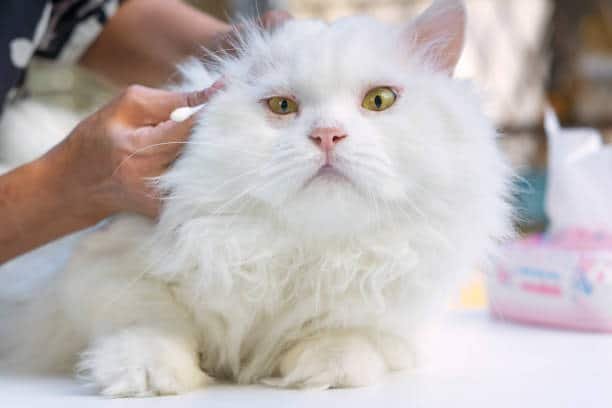
Conclusion
Shedding is a natural and normal process for cats. Dead hair forms hairballs and cause problems in cats. Shedding helps get rid of it and keeps their skin healthy.
However, excessive shedding can indicate underlying medical problems that need to be addressed by a veterinarian.
Understanding the causes of shedding and taking proper care of our feline friends is crucial. It helps them maintain a healthy coat and reduce excessive hair loss.

